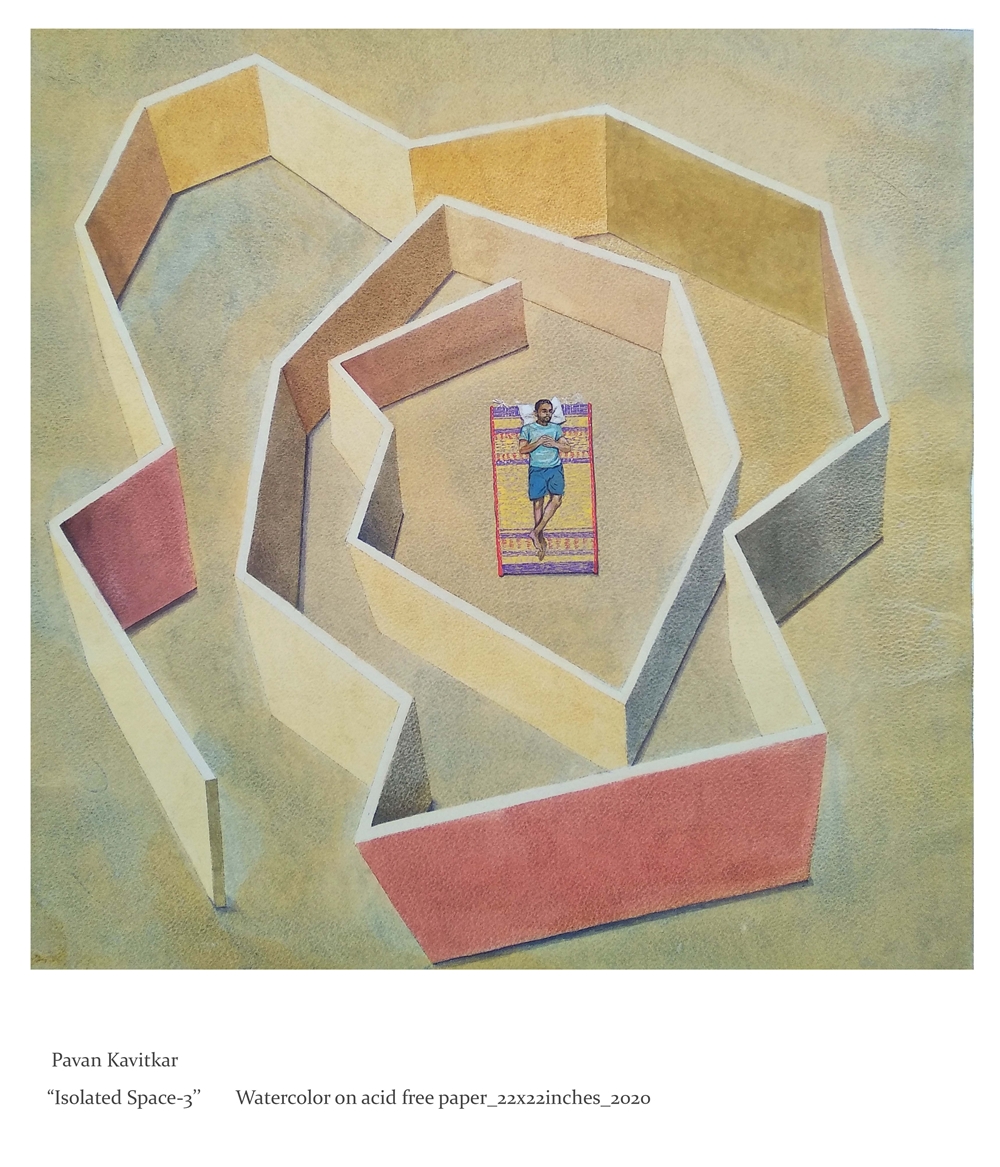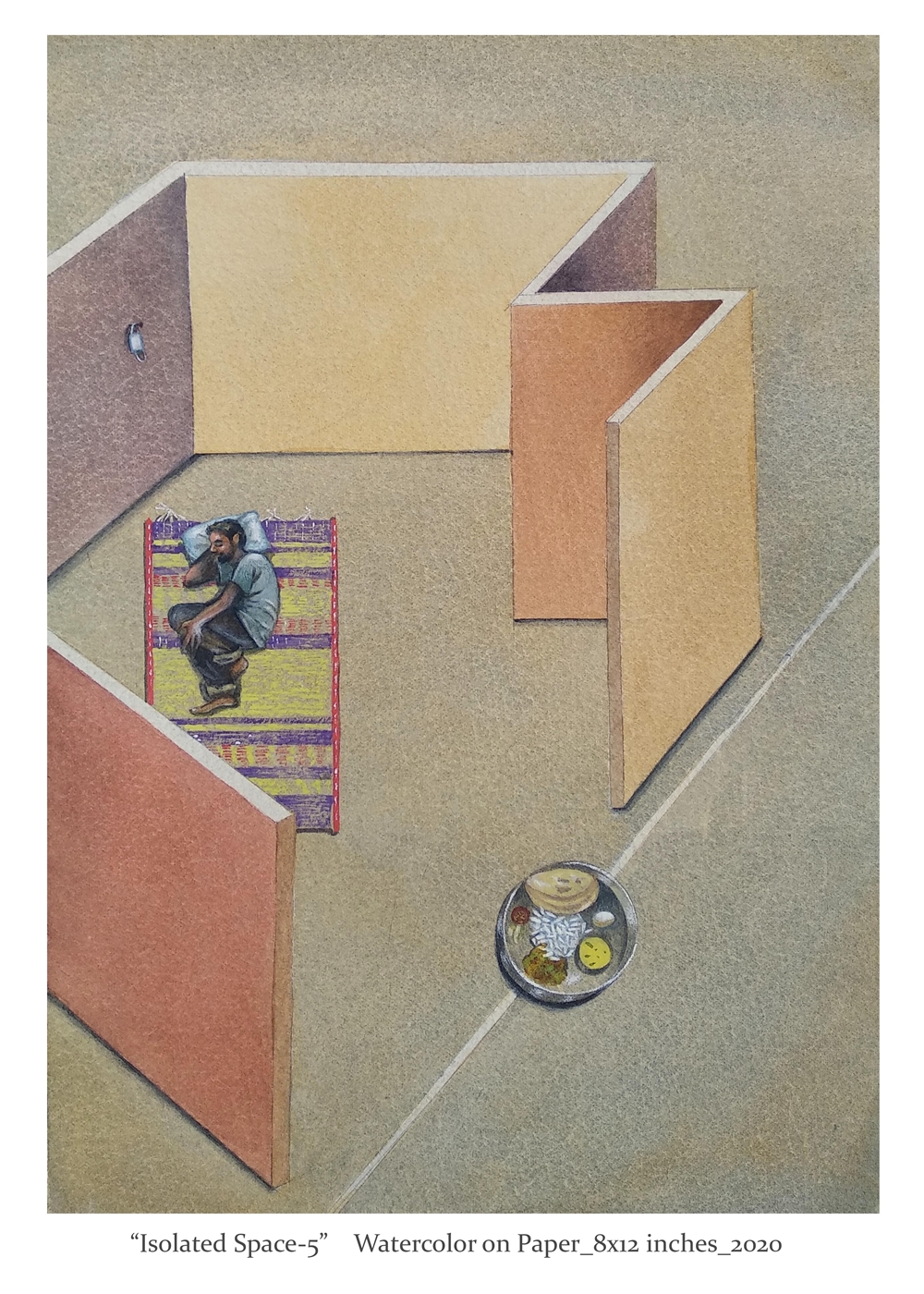Pavan Kavitkar’s visuals depict “the strong impact of the social and political situation” with respect to the present “space and time”.
REBECCA MARTIN.jpg)
As an exploration of space, Kavitkar’s work transforms the psychophysical realm in context with the contemporary situation. Contrary to his minimalistic approach are the opulent interpretations his works offer. The stark geometric divisions of space visually put one in mind of Paul Strand’s photography depicting shadow play. The attention to minute detail and the realism offered in specific fragments of the works delegates to the meticulous care one experiences in the company school paintings.
Amusingly, traditional elements from the past make way to Kavitkar’s landscaping allowing the thematic relativity to venture into its roots as well as be universally acknowledged and accepted. The aforementioned can be justified comparing the greenery to the visual representation of flora in the Pahari Miniature Paintings dated back to the 16th century. Aside from this, usage of constituents like the ‘bamboo mat’ and ‘thali’ reinstall the attempt to establish the connection between nativity, heritage and culture on a general level.
Although compositionally contrasting, one can find a tonal resemblance with respect to Sudhir Patwardhan’s work. As evidently noted, his pieces are unquestionably pervaded with substantial elements which is offset compared to Kavitkar’s minimalistic approach, but the overall thematic treatment of space to a certain extent can be deemed similar.
The artist’s usage of flat washes in muted colours authorises an inescapable depiction of the highlighted subject adding value to the artwork’s undeviating implication. This specific style of subdued colours allowing the enhancement of the featuring subject can be visually justified in the works of Bikash Bhattacharjee which inarguably adds to the gravity of the motif.
Kavitkar wrote that his visuals depict “the strong impact of the social and political situation” with respect to the present “space and time”. Undoubtedly, on observation, his work does portray the isolation one experiences during the pandemic and analyses the relation with the outside world. The structure and configuration effectively heightens the loneliness that Kavitkar transparently divulges with self representation as an effort to associate personal experiences with a universal context.
The assurance that the viewer needn’t second-guess the inference visually offered in no way limits the interpretations and conclusions that can be drawn from Kavitkar’s work. Attention to detail, paired with his choice of components, allow his minimal style of work to echo volumes about the pervasive virus revealing to us the requisite simplicity and humility with which life can be approached.∎
Rebecca Martin is a BVA graduate with a keen eye for detail, always ready to seize any opportunity coming her way.

